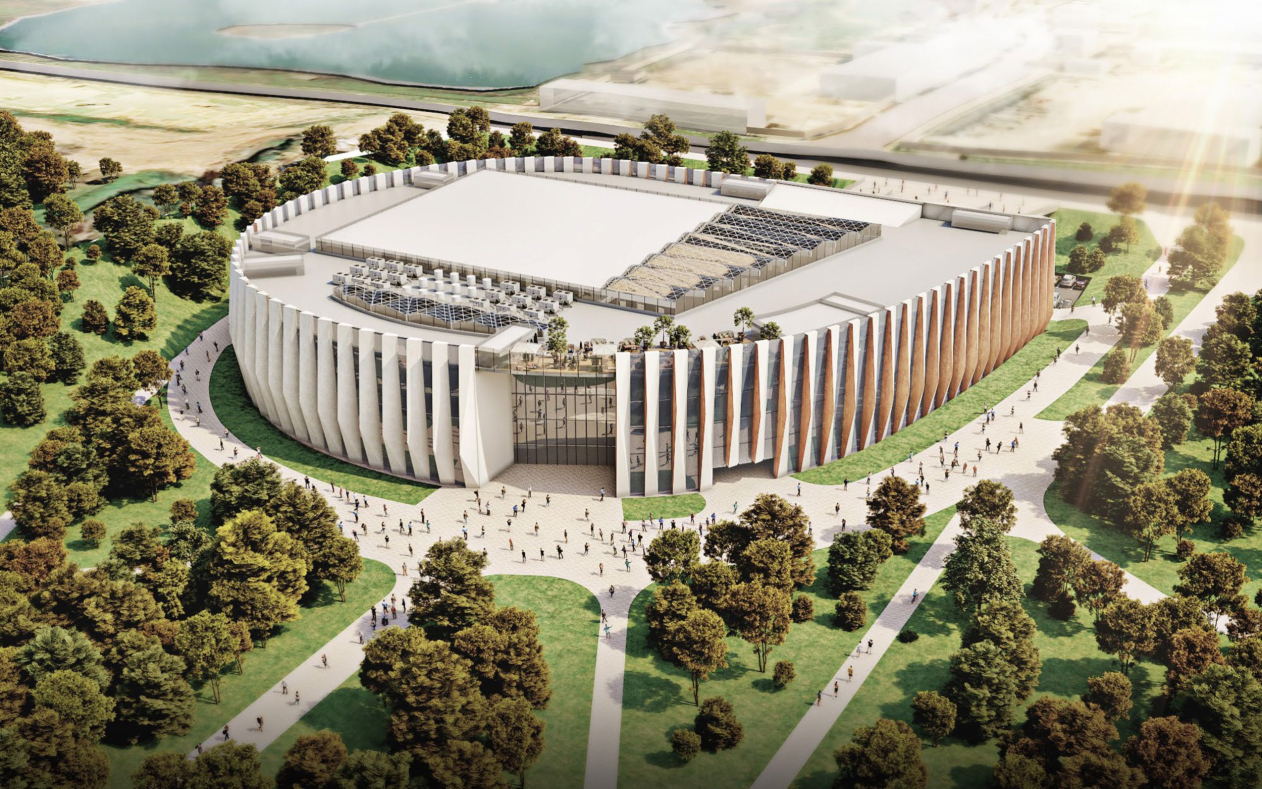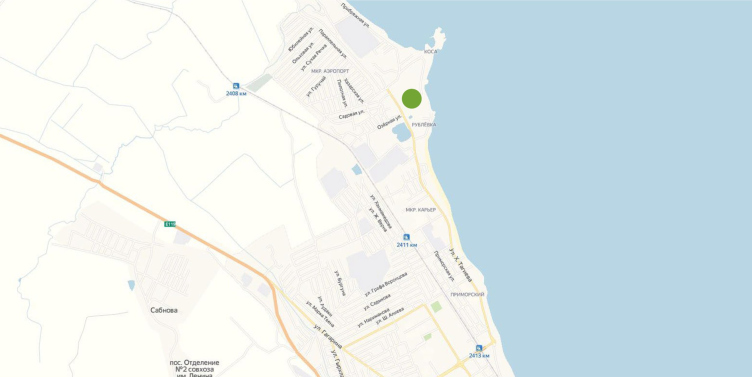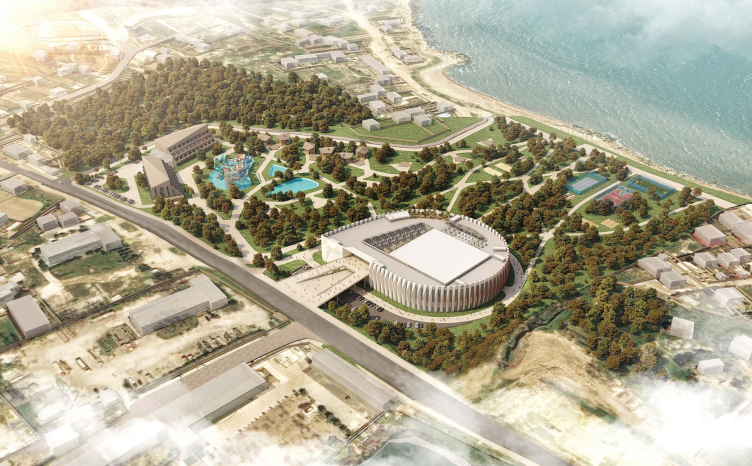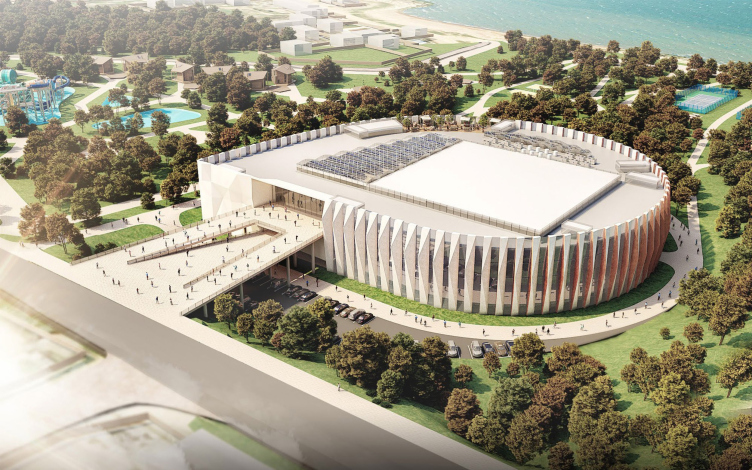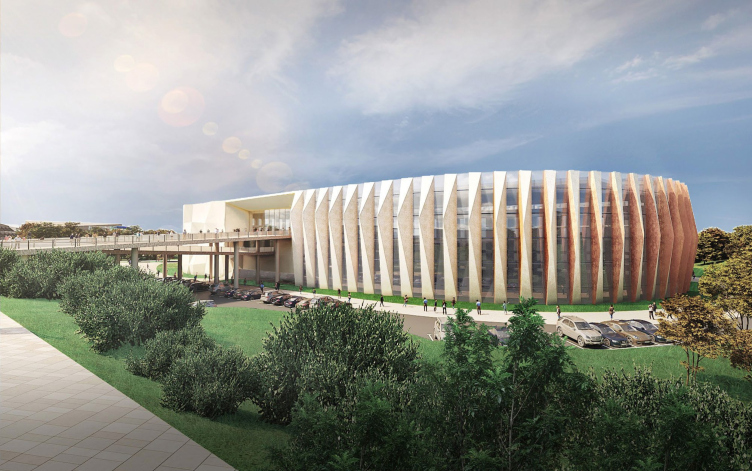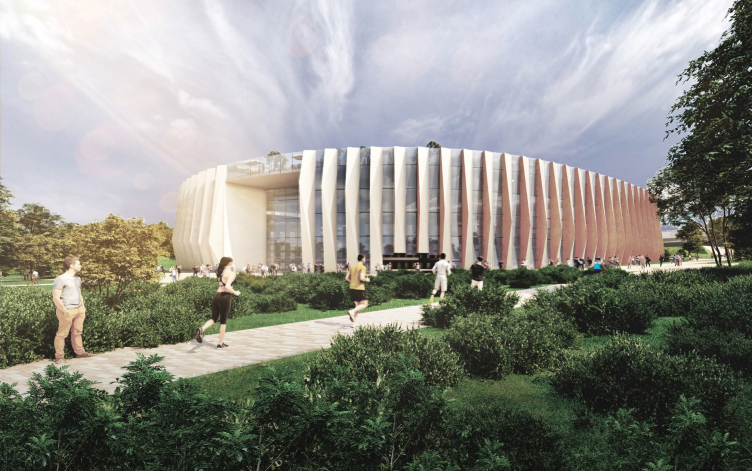Today, Derbent is actively developing as a tourist center. In 2019, an international competition for the master plan of the city was organized, and this fall a comprehensive development plan for Derbent until 2025 was approved, under which the city will receive new infrastructure and social facilities. The biggest of them are: the embankment, a ropeway to the Naryn-Kala fortress, as well as the Sports Palace.
Sports Palace in Derbent
Copyright: © ASADOV architects
The land site for the Sports Palace was chosen in the north part of the city, containing predominantly private houses – this is the place where the 12-kilometer embankment will end, which will connect the pedestrian spaces and the parks situated along the seashore. Google panoramas of 2019 give a somewhat depressing picture of the area: broken roads without sidewalks, littered roadsides, foam blocks and roofing material lying around – an environment far from the image of an ancient city.
However, this picture is likely to change after the landmark of the Sports Palace appears – a building that is large and modern, yet at the same time rooted in the local culture.
The Sports Palace will occupy only a part of the vast wasteland, which, according to the maps, was once intended for the construction of a housing project. The part that is closest to the Caspian Sea will host a park with open-air sports fields for various kinds of sports: big and table tennis, beach football and volleyball, basketball, yoga, and dancing. In the northern part, which was not included in the design boundaries, since it belongs to another investor, the architects, as part of the client’s recommendation, propose to place a hotel with a water park – currently, the tourists can only use guest houses in this area.
The Palace is turned with its main entrance to the Khandadash Tagiev Street: the building, with a plan resembling a water drop, is linked to this street with a two-level bridge, which continues in a ray into the atrium, where it finally gets “broken” by the amphitheater staircase. Under the bridge, there is a parking lot, and on this side there are technical premises: locker rooms, bathrooms, and medical facilities. The rounded side of the Palace overlooks the park and the waterfront, and thus, like an ancient sports arena, ends up being included in the landscape.
Sports Palace in Derbent
Copyright: © ASADOV architects
Sports Palace in Derbent
Copyright: © ASADOV architects
It must be mentioned that the shape of the palace did not come about at once, and was conditioned by its functional content. The program of the building turned out to be indeed comprehensive: it is expected that on the inside, in addition to the conventional gyms and a swimming pool with all the related facilities, there will be a few restaurants, offices, a hotel for the guest athletes, a fitness hall, as well as a lounge zone on the roof and a rock-climbing wall. Having packed all the rooms into a square first, the architects were not satisfied with the resulting shape, and inscribed them in a circle, adding a curl of the bridge, which gave the volume a resemblance to ammonite, further enhanced by the edges of the lamellae. The volumetric pylons gradually change the slanting angle, and, thanks to this parametric effect, the building again takes on the sufficient degree of dynamics, generally inherent to sports facilities.
Sports Palace in Derbent
Copyright: © ASADOV architects
The fossil found at the bottom of the Caspian Sea is an allusion supported by the location of the palace on a lowered part of the terrain, which at the same time helps to make the scale of the building more commensurate with the surroundings. The architects intended to use local materials in the façade elements and finishing materials, but the local tuff turned out to be too soft, and the choice fell on a more durable marble-like limestone, also available in the region. The glass with stone inclusions of a yellowish/rosy hue echoes the local colors and Derbent’s main tourist attraction – the Naryn-Kala fortress.
Sports Palace in Derbent
Copyright: © ASADOV architects
Sports Palace in Derbent
Copyright: © ASADOV architects
The arena of the Sports Palace is designed for 2,270 seats. The complex can host both competitions and practices for adults and children, as well as exhibitions, forums and concerts. The building will include a conference hall with a stage for presentations, a meeting room, and a restaurant for 180 seats.
This way, this area, which currently does not have a single chain supermarket, and whose greatest engineering facility can be considered to be the gas station, is receiving a grand-scale center providing jobs and leisure activities for many people. Not only its visual appearance, but also its town planning significance makes the Sports palace similar to ancient fortresses – the multifunctional centers of those days.
The construction of the Sports Palace in Derbent began in August 2021.

